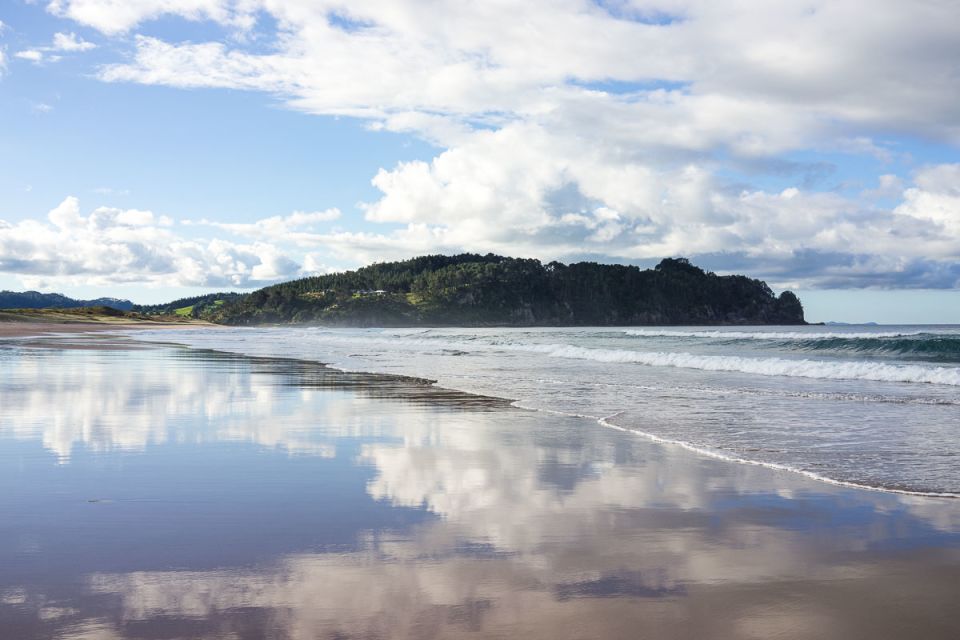Flying in from Christchurch, we left the south island with its rugged mountains and pristine lakes behind. While the south reminded me of home (California), the north island had a laid-back and slightly tropical vibe. The moment I stepped out of Auckland airport, an unexpected wave of humidity hit me. A couple of degrees higher, but not as overwhelming as an Asian summer.

Going along with the laid-back vibe, we kicked off the second half of our New Zealand trip with a visit to an area called Hahei, with close proximity to a slew of coastal points of interests on the Coromandel Peninsula. The most popular spot here is Cathedral Cove. The cavernous arch of the cove frames a large stack of limestone rocks jutting out of the ocean, standing isolated and braving the waves, making for an interesting photo composition. Since it was a relatively short drive and walk from our lodging, we ended up visiting it twice to catch both the sunrise and the sunset.
Aside from the cove, there are many beaches in the vicinity with white sands, turquoise blue waters, and practically devoid of people. Perfect spots for unwinding and recharging after our south island adventures.
Second on our list was one of New Zealand's signature tourist activities, glowworm-spotting. These cave-dwelling insects emit a faint blue light from their body, painting a swatch of stars along the cave interior. Many caves in New Zealand are home to these insects, some of which are guided and swamped with tourists, some of which are wild and free. We opted to visit the latter kind as I'm usually not a fan of guided tours if I'm trying to take pictures. Some brief research on the internet led us to a system called the Waipu Caves. The caves have three sections, each leading further into the darkness with higher levels of water. Come prepared with a headlamp and either waterproof shoes or shoes that you don't care about, because they're going to get muddy and wet. A tripod is essential for taking pictures as the caves are pitch black and the glowworm lights are faint. After spending quite some time in the cave and getting our fill of the dark, we welcomed the light and drove back to our lodging in Auckland.
Auckland, the largest city in all of New Zealand, was our final destination. Having been on the road the majority of this trip, ending it in a large urban area helped us integrate back into civilization. What surprised me the most about the center of Auckland was the sudden appearance of Asian eateries. Boba cafes, bingsu joints, and even specialty Japanese stores were such an unexpected sight to see on this island. But after learning that Asians made up a majority of the student population at the nearby University of Auckland, it was clear to me why this mini sphere of Asian influence existed.
On the last night of the trip, we went to Mount Eden to catch the sunset. The dormant volcano sits just south of the Auckland city center and offers a sweeping view of the city and harbor. With the tall vibrant grass swaying in the wind, we made a swift climb to the top as I wanted to capture as much of the sunset as possible. As we stood on top of the crater, we watched the reddish glow of the sun give way to twilight, then to nothingness. But underneath it all, the city slowly lit up, countering the will of the night. It was a sight to behold and a great way to conclude our trip.